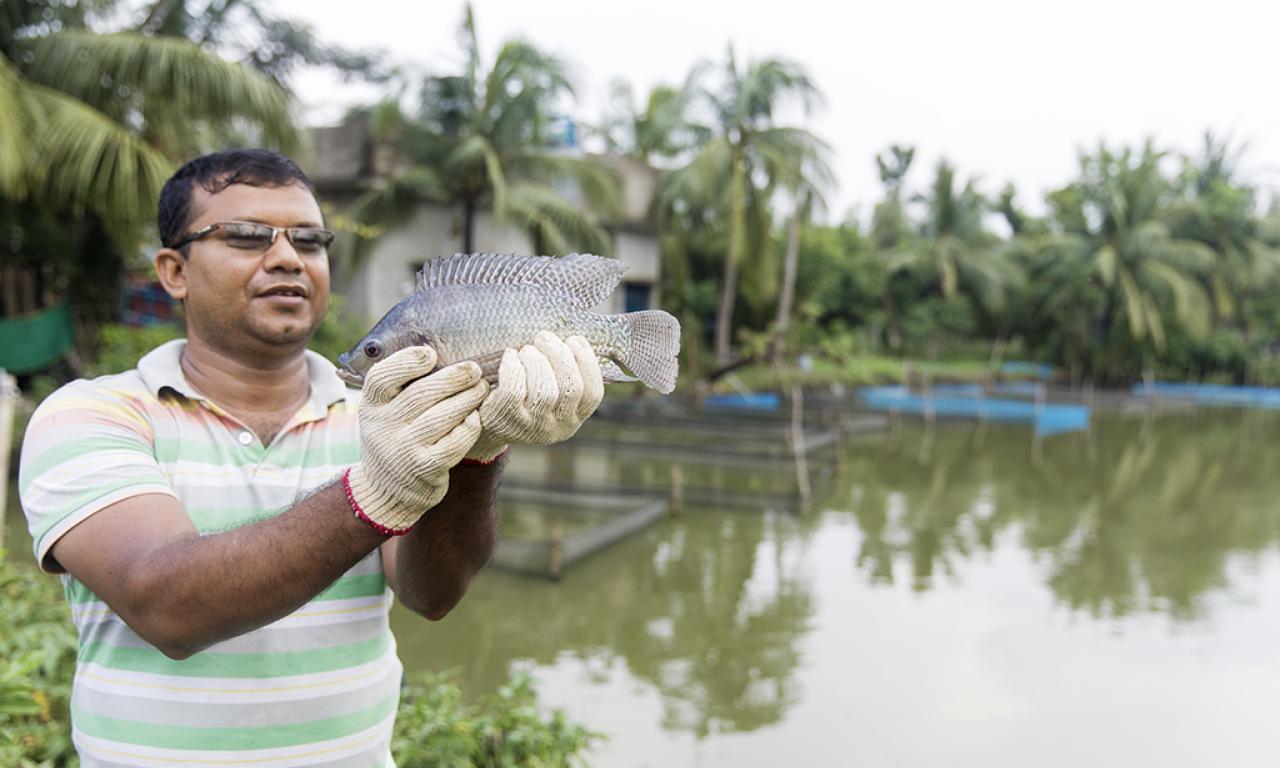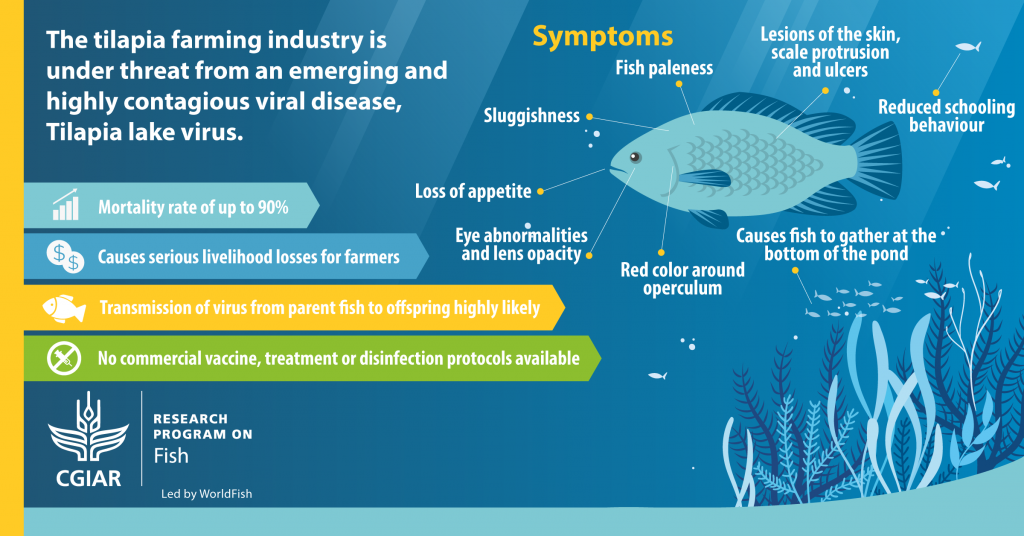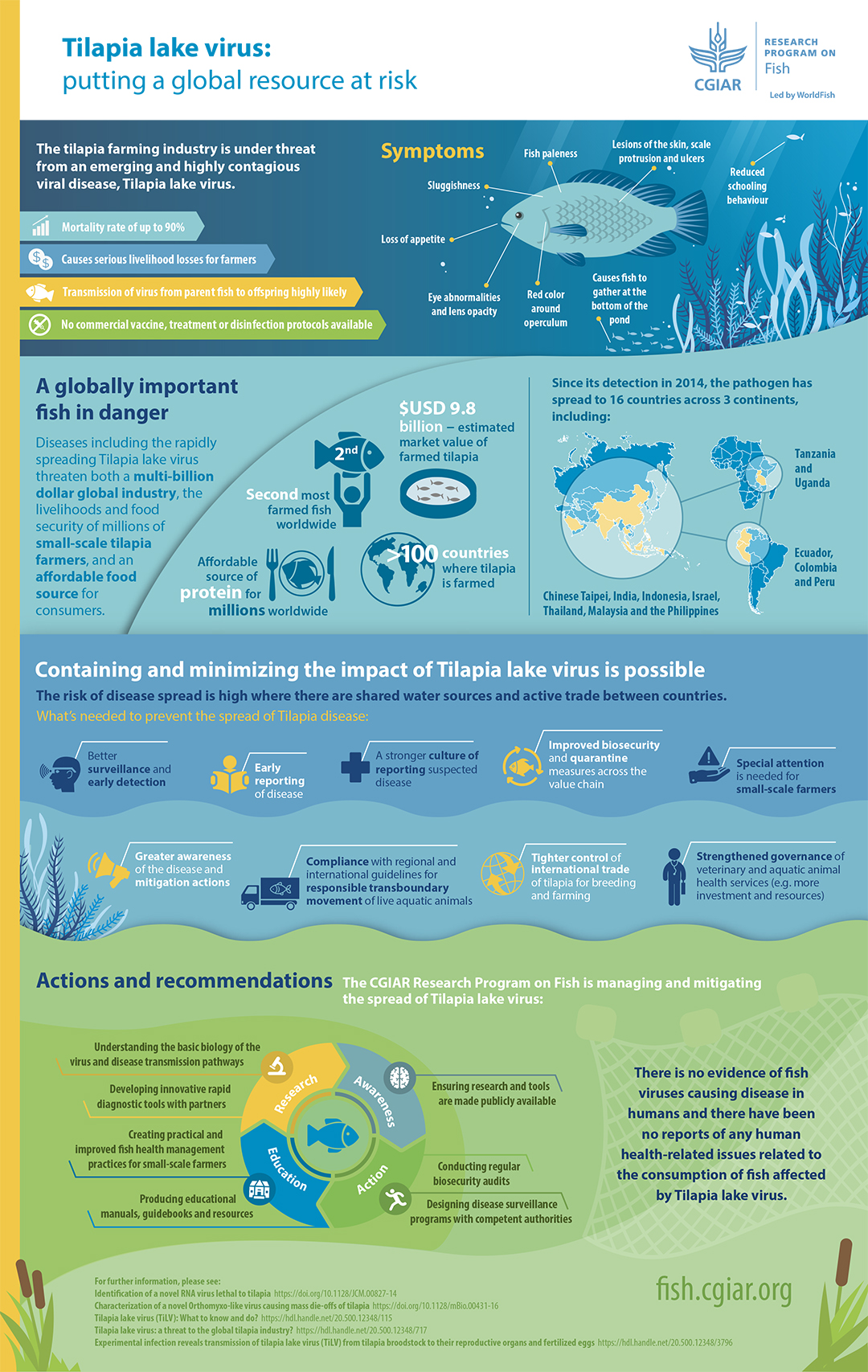
The world’s second most farmed fish, tilapia, is under threat from a highly contagious disease called Tilapia lake virus (TiLV). With a mortality rate of up to 90% and no vaccine or treatment commercially available, the disease has raised alarm among both aquatic animal health professionals and tilapia farmers worldwide.
Perhaps most at risk are the millions of small-scale tilapia farmers that depend on the typically hardy fish for their incomes and food security. Likewise, consumers are poised to feel the impact of any outbreaks too, particularly those in developing countries for whom tilapia is an affordable source of protein and nutrition.

Since its detection only five years ago, the pathogen has spread rapidly to 16 countries across three continents, thanks to factors including shared water sources and the trade of live tilapia for breeding and farming without the right biosecurity measures in place.
While the situation remains serious, scientists from the CGIAR Research Program on Fish Agri-Food Systems (FISH) are confident that containing and minimizing the impact of the virus is possible, with many developments and actions already underway.
“Together with our partners we’re working right across the spectrum from researching the basic biology of the virus and disease transmission pathways, to developing rapid diagnostic tools, designing better disease surveillance programs, and providing training and educational materials for stakeholders in our focal and scaling countries,” says Dr. Vishnumurthy Mohan Chadag, aquatic animal health expert and WorldFish Principal Scientist.
“Small-scale fish farmers are particularly vulnerable,” he adds. “We need to ensure that they receive the right information to help them both identify the presence of the disease in their ponds and act quickly to mitigate its spread and impact on their farms and beyond.”
As part of outreach and education efforts, FISH is producing factsheets, manuals, guidebooks and other resources to support not just farmers, but local authorities and partners too. All research and resources are made publicly available in the WorldFish publication database.
The emergence of TiLV is the first-ever major disease epidemic reported in tilapia aquaculture and puts a multi-billion-dollar industry at risk. Cooperation and action are needed by stakeholders across the value chain on an international scale to safeguard the future of this global resource and protect the livelihoods, food and nutrition security of millions worldwide.

Related pages and articles:
- fish disease under the microscope
- Tilapia, a fish to feed the world, and the deadly virus that may destroy it